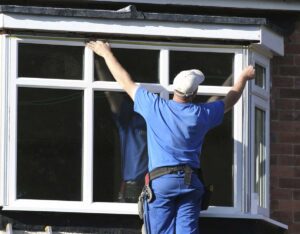
Double Glazing Specialists
Add a review FollowOverview
-
Founded Date August 21, 1958
-
Sectors Automotive
-
Posted Jobs 0
Company Description
Why No One Cares About Double Glazing Materials
Understanding Double Glazing Materials: A Comprehensive Guide
Double glazing has actually ended up being a basic practice in modern building and construction and home restoration, mostly due to its undeniable advantages in energy performance, soundproofing, and general comfort. At the core of this development lies a selection of products, each contributing distinct advantages to the double glazing phenomenon. This post checks out the different materials utilized in double glazing, their homes, benefits and drawbacks, and how they affect the overall performance of windows.
What is Double Glazing?
Double glazing is a kind of insulation that includes two panes of glass separated by a gap, usually filled with air or inert gas. This configuration serves a main function: to minimize heat transfer in between the exterior and interior of a building. As a result, double-glazed windows assist retain heat throughout winter and keep areas cooler throughout summertime.
Advantages of Double Glazing
- Energy Efficiency: Minimizes heat loss, reducing energy bills.
- Sound Insulation: Reduces outside sound, enhancing comfort.
- Condensation Reduction: Lesser condensation indicates less danger of mold.
- Increased Security: Tougher than single-pane alternatives, providing higher protection against break-ins.
- Improved Property Value: Homes with double glazing are typically more appealing to purchasers.
Common Double Glazing Materials
1. Glass Types
The efficiency of double glazing is mainly influenced by the kind of glass utilized. Below are the common kinds of glass used in double glazing:
| Glass Type | Description | Benefits | Disadvantages |
|---|---|---|---|
| Drift Glass | Fundamental glass, typically utilized in basic applications. | Cost-efficient | Less insulation compared to Low-E glass. |
| Low-Emissivity (Low-E) | Glass coated with a thin metallic layer to show heat. | Outstanding insulation, maintains natural light. | Greater preliminary expense. |
| Tempered Glass | Heat-treated glass that is more powerful and safer. | More resilient, resistant to effect. | Can be more costly due to processing. |
| Laminated Glass | Glass layers bonded with a plastic interlayer. | Deals security and UV protection. | Heavier and more expensive choices. |
2. Spacer Bars
Spacer bars are the products that separate the two panes of glass in a double-glazed unit. Various products can be utilized for this function:
| Spacer Bar Material | Description | Benefits | Drawbacks |
|---|---|---|---|
| Aluminium | Light-weight and rigid but conductive. | Durable and cost-effective. | Can cause condensation due to heat transfer. |
| PVC-U | A plastic option, less conductive compared to aluminum. | Great thermal efficiency. | May not be as resilient as aluminum. |
| Warm Edge Technology | Frequently consists of a composite product. | Lowers thermal bridging, improving effectiveness. | Normally more expensive. |
3. Gas Fills
The gap between the panes of glass can be filled with air or particular gases to improve insulation.
| Gas Type | Description | Benefits | Drawbacks |
|---|---|---|---|
| Air | Regular air without any special residential or commercial properties. | Cost-effective and sufficient for many applications. | Lower insulation than gas-filled units. |
| Argon | Inert gas that is denser than air. | Excellent thermal insulation. | More expensive than air but typically justified. |
| Krypton | Heavier and more efficient than argon. | Best insulation of the gas choices. | Much greater cost and needs specialized methods. |
Factors Influencing the Choice of Double Glazing Materials
When selecting materials for double glazing, a number of elements should be considered:
- Climate: The local environment has a substantial influence on energy effectiveness, determining the need for particular glass types or gas fills.
- Budget: Initial expenses might surpass long-lasting advantages. Homeowners ought to balance upfront expenses with possible cost savings.
- Aesthetic Preference: Different frames and glass types offer a series of visual styles that ought to complement the architecture of the home.
- Structure Regulations: Local building codes might dictate specific materials, necessitating adherence to these standards.
Upkeep of Double Glazed Units
Beyond the installation of double glazing systems, regular maintenance is vital for durability and efficiency. Here are a couple of upkeep ideas:
- Regular Cleaning: Use proper cleaners for both glass and frames to avoid accumulation of dirt and grime.
- Examine Seals: Periodically examine window seals for damage or wear, as jeopardized seals can considerably reduce insulation effectiveness.
- Condensation Control: Monitor for condensation in between panes, which may indicate seal failure and require repair work.
Often Asked Questions (FAQs)
Q: How long do double glazing installation cost-glazed windows last?
A: Typically, double-glazed windows can last anywhere from 20 to 35 years, depending upon the quality of materials and setup.

Q: Can I change simply one pane of a double-glazed unit?
A: It is usually suggested to change the whole double-glazed unit for optimal performance, as replacing only one pane can lead to mismatching insulation homes.
Q: Are double-glazed units more expensive than single glazing?

A: Yes, double-glazed systems usually have a higher in advance cost due to advanced products and building and construction, but they typically pay for themselves through energy savings.
Q: Will double glazing decrease sound pollution?
A: Yes, double-glazing efficiently minimizes outdoors noise, making your living environment more serene.
Picking the best materials for double glazing is a vital step in enhancing energy efficiency, sound insulation, and the general convenience of a home. With various glass types, spacer bars, and gas fills offered in the market, understanding these elements can considerably affect performance. Homeowners must consider their unique needs, choices, and local factors to accomplish the best outcomes from their investment in double glazing innovation. Sticking to maintenance practices and staying notified about advancements in glazing products will guarantee long-lasting gain from this practical and vital feature of modern architecture.
